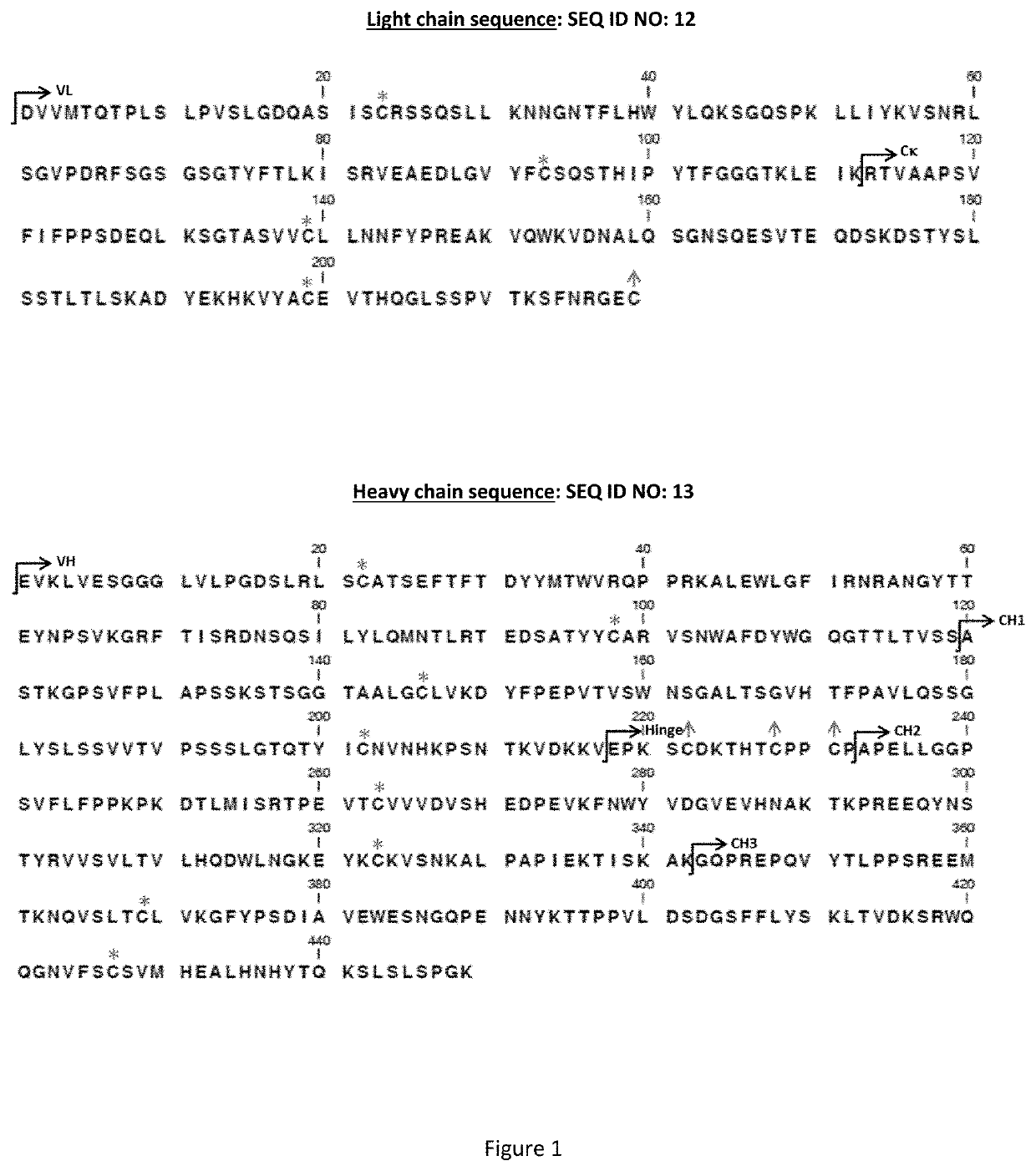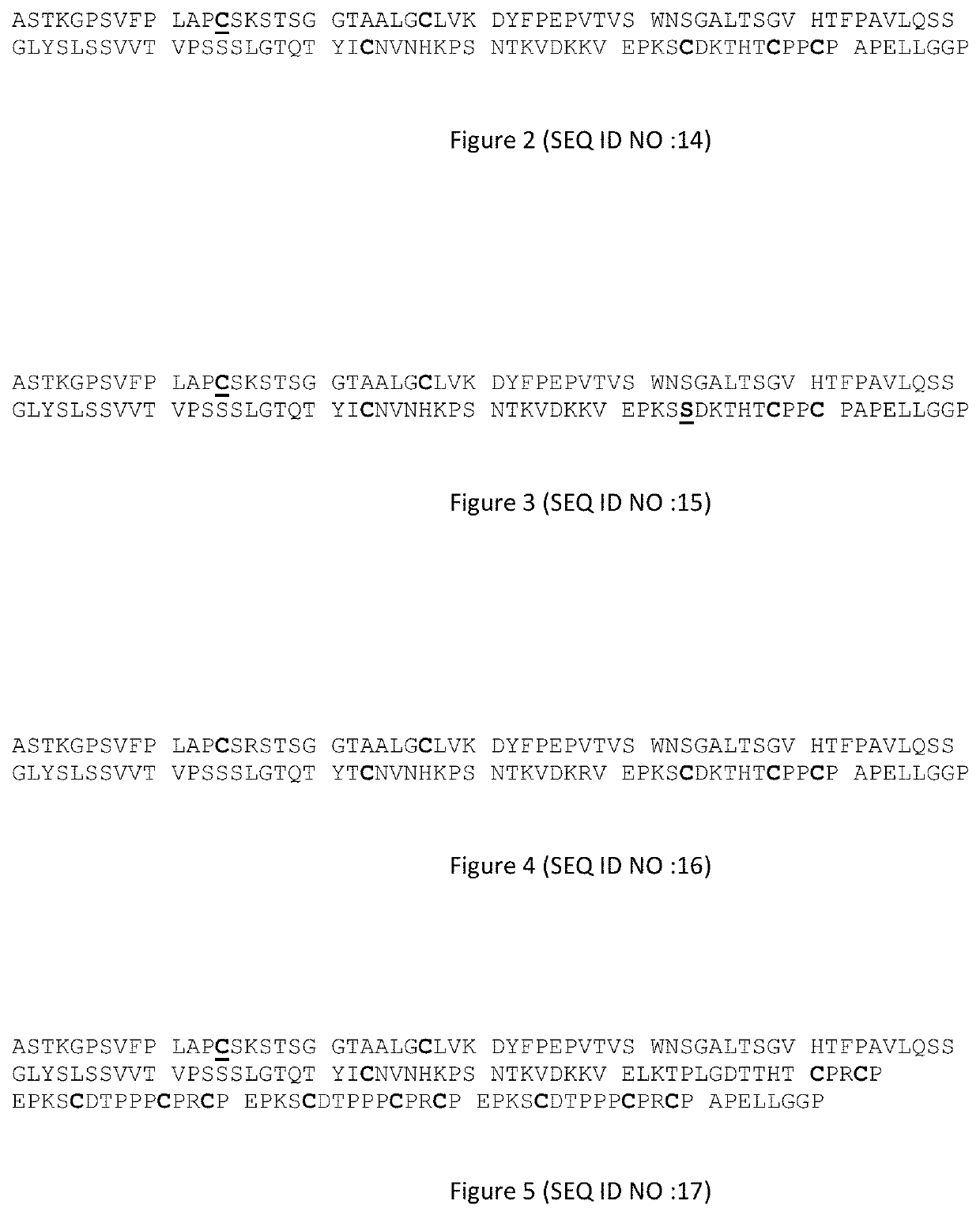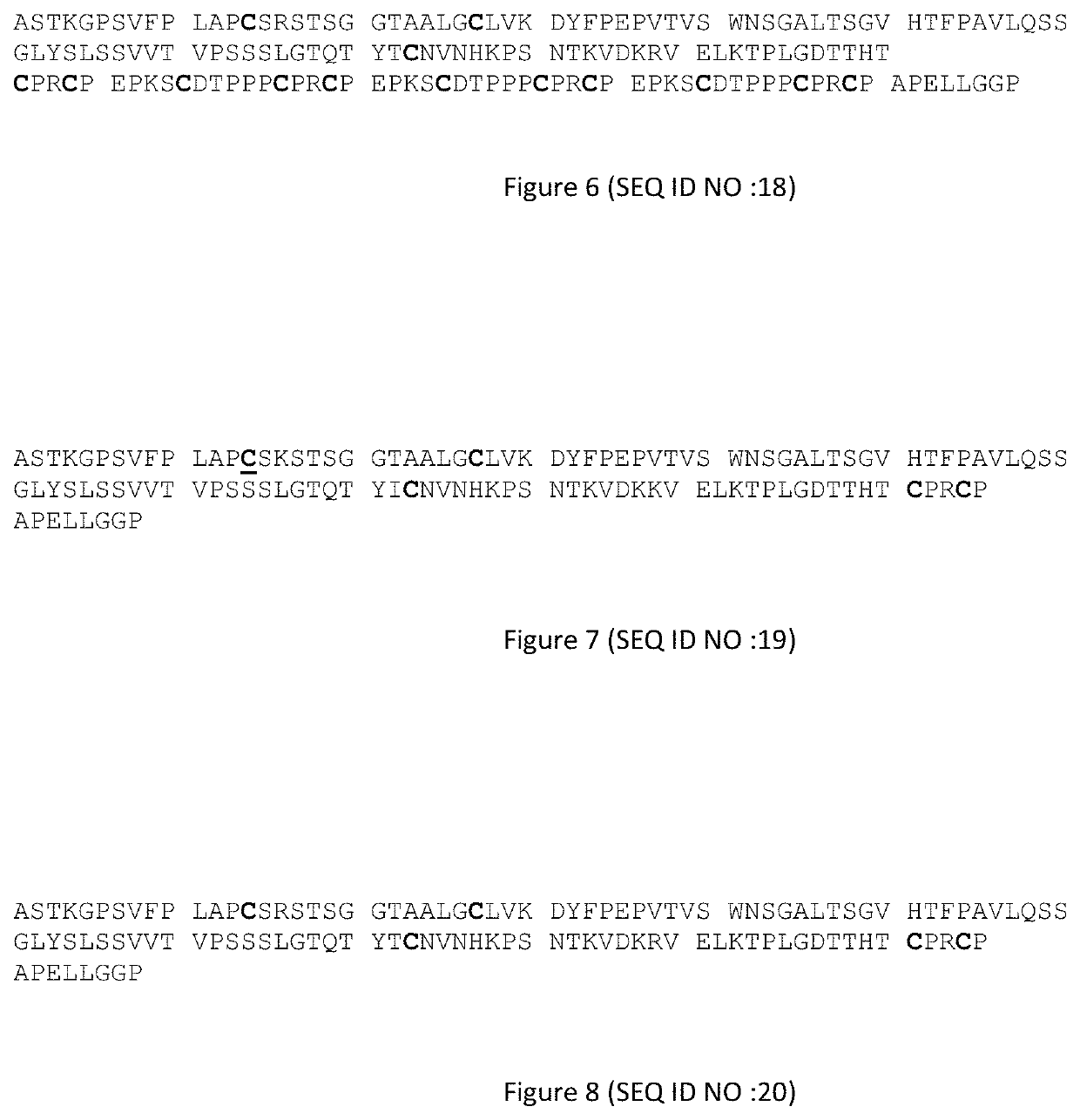Human IgG1 derived antibody with pro-apoptotic activity
a human igg1 and anti-apoptotic technology, applied in the field of antibodies, can solve the problems of high purification cost, side effects, and insufficient drug effects of existing antibody drugs, and achieve the effect of increasing pro-apoptotic activity and potentializing therapeutic efficiency
- Summary
- Abstract
- Description
- Claims
- Application Information
AI Technical Summary
Benefits of technology
Problems solved by technology
Method used
Image
Examples
examples
[0163]1—Pro-Apoptotic Activity of Anti-OAcGD2 Antibody In Vitro
[0164]In a first step, the chimeric anti-OAcGD2 antibody, c8B6, has been designed from 8B6 by substituting its constant regions by the one of a human IgG1,κ. Its sequences are represented in FIG. 1 (SEQ ID NO: 12 and SEQ ID NO: 13).
[0165]The structure of this antibody comprises 2 intramolecular disulfide bonds in light chain (Cys23-Cys93 and Cys139-Cys199), and 4 intramolecular disulfide bonds in heavy chain (Cys22-Cys98, Cys146-Cys202, Cys263-Cys323, and Cys369-Cys427). Cysteine residues involved in intra-chain disulfide bonds are indicated by a star (*). The whole structure is stabilized by 3 intermolecular disulfide bonds: light chain is connected to heavy chain by one disulfide bond between the last cysteine residue of light chain and the cysteine residue of the upper hinge region (Cys219-Cys 222), and heavy chains are connected by 2 disulfide bonds connecting the Cysteine in the middle hinge (Cys228-Cys228 and Cys23...
PUM
| Property | Measurement | Unit |
|---|---|---|
| concentration | aaaaa | aaaaa |
| volume | aaaaa | aaaaa |
| stability | aaaaa | aaaaa |
Abstract
Description
Claims
Application Information
 Login to View More
Login to View More - R&D Engineer
- R&D Manager
- IP Professional
- Industry Leading Data Capabilities
- Powerful AI technology
- Patent DNA Extraction
Browse by: Latest US Patents, China's latest patents, Technical Efficacy Thesaurus, Application Domain, Technology Topic, Popular Technical Reports.
© 2024 PatSnap. All rights reserved.Legal|Privacy policy|Modern Slavery Act Transparency Statement|Sitemap|About US| Contact US: help@patsnap.com










